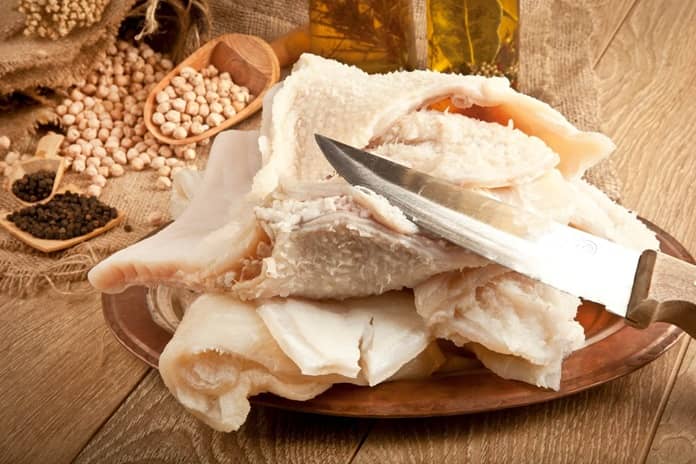World Tripe Day is celebrated on October 24. Tripe is the stomach lining of animals like cows, sheep, or pigs. Once considered food for the lower class, it is now a popular treat enjoyed by people everywhere. World Tripe Day was started by the Tripe Marketing Board, a fun project from a UK publishing house, to encourage people to try tripe.On this day, people make tasty tripe dishes and enjoy them with family and friends.
History of World Tripe Day
World Tripe Day has an interesting history. Tripe is the lining of the stomach of cows, sheep, and pigs. The na,e might come from the old French word ‘tripe’, which means ‘intestines’ or ‘guts,’ or it could have roots in the Spanish word ‘tripa,’ which itself might come from the Arabic word ‘therb.’
In the Middle Ages, tripe was mostly eaten by the lower class and was not considered a luxury food for the wealthy. Because of this, the term was sometimes used to describe things or people as worthless or foolish.
Over time, tripe became more popular. By the Victorians era, people of all social classes in England appreciated it. In England, cleaned tripe-tripe with the fat removed and thoroughly cleaned was especially popular.
Tripe also gained popularity in other European countries like France, Italy, and Spain. As time went on, different types of tripe appeared, with stomach linings from animals like antelopes and giraffes, in addition to cattle and pigs, being used.
Tripe soon spread to different parts of the world, with each culture creating its own unique recipes. Examples include Andouille in France, Bumbar in Bosnia and Herzegovina, Dobrada in Portugal, Kare-Kare in the Philippines, Tripe Soup in Jordan, and Ojree in Pakistan.
In Mexico, ‘Tacos de Tripa’ features crunchy fried intestines and is a popular delicacy. World Tripe Day was created to encourage people to cook with and enjoy tripe.
| 600 A.D. (Tripe Originates) | Tripe is consumed by people in France. |
| 1500 A.D. (Tripe Becomes Commoner’s food) | Tripe is consumed by the poor only. |
| 1800s (Tripe Becomes Popular) | Tripe reaches all over the world with every country having its own recipe for tripe. |
| 2011 (World Tripe Day) | World Tripe Day is created by the Tripe Marketing Board to popularize tripe. |
5 Interesting Facts About Tripe
Rich in Minerals: Tripe is packed with essential minerals like magnesium, iron, calcium, and zinc.
Low in Calories: It’s a low-calorie, high-protein food, making it a great option for weight loss.
Contains Essential B Vitamins: Tripe provides important B-complex vitamins, including niacin, folate, and cobalamin.
Sourced from Specific Stomachs: It comes from the first three stomachs of cows, never the fourth.
Shakespeare Mentioned It: Tripe is mentioned in Shakespeare’s play The Taming of the Shrew.

Health Benefits of Tripe
While tripe might not be the first thing that comes to mind when considering healthy foods, it offers several nutritional benefits:
- Protein: Tripe is a good source of protein, which is essential for muscle repair and overall health.
- Vitamins and Minerals: Tripe contains various vitamins and minerals, including B vitamins, zinc, and iron, which are important for maintaining energy levels and supporting metabolic functions.
- Low Fat: Depending on the preparation method, tripe can be relatively low in fat, making it a good option for those looking to reduce their fat intake.
Conclusion
In conclusion, World Tripe Day on October 24 celebrated a once-overlooked culinary treasure that has evolved from humble beginnings to global acclaim. Tripe, with its rich history and varied cultural significance, now stands as a testament to the diverse ways in which food can unite people across the world.
What was once considered a lower-class food has become a cherished ingredient in a multitude of traditional dishes from various cultures. As we observe World Tripe Day, it’s an opportunity to appreciate not only the unique flavors and nutritional benefits of tripe but also the rich historical journey it has undertaken. So, whether you’re a longtime fan or trying it for the first time, join in the celebration and enjoy the diverse and delicious ways this remarkable ingredient can be enjoyed.
Frequently Ask Question
What is the origin of World Tripe Day?
World Tripe Day was created in 2011 by the Tripe Marketing Board, a fun initiative from a UK publishing house aimed at increasing awareness and appreciation for tripe.
Why is tripe significant historically?
Historically, tripe was considered food for the lower class in medieval Europe and was often associated with poverty. However, it gained popularity over time and is now enjoyed by people of all social classes. Its historical significance reflects changes in food culture and class perceptions.
How has tripe evolved over time?
Tripe has evolved from being a staple for the poor to a popular ingredient in many global cuisines. It became more widely appreciated during the Victorian era in England and spread to other parts of the world, where various cultures developed their own recipes and dishes featuring tripe.
What are some traditional tripe dishes from around the world?
Some traditional dishes featuring tripe include Andouille from France, Bumbar from Bosnia and Herzegovina, Dobrada from Portugal, Kare-Kare from the Philippines, Tripe Soup from Jordan, and Ojree from Pakistan. In Mexico, ‘Tacos de Tripa’ are a popular delicacy made from crunchy fried tripe.
What are the nutritional benefits of tripe?
Tripe is rich in essential minerals such as magnesium, iron, calcium, and zinc. It is also low in calories, high in protein, and contains important B vitamins, including niacin, folate, and cobalamin. Its low-fat content, depending on preparation, makes it a healthy food choice.
You may also like to read, National Chicken Fried Steak Day – October 26, 2024
